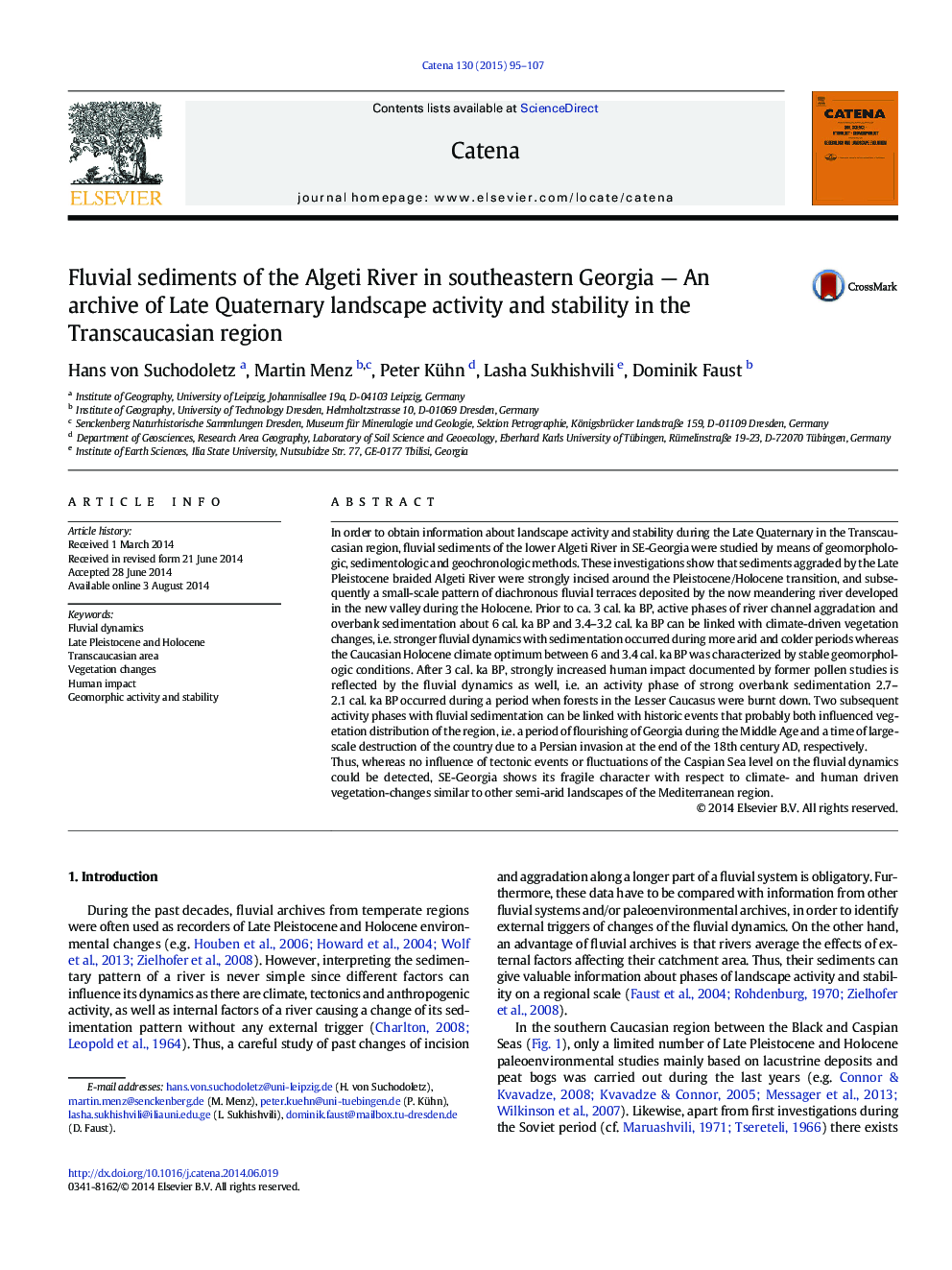| کد مقاله | کد نشریه | سال انتشار | مقاله انگلیسی | نسخه تمام متن |
|---|---|---|---|---|
| 4571151 | 1629222 | 2015 | 13 صفحه PDF | دانلود رایگان |

• We present the first well-resolved Holocene fluvial record for the Transcaucasian area.
• Prior to 3 ka, fluvial changes are caused by natural changes of landscape stability.
• After 3 ka, human impact dominates landscape stability and thus the fluvial dynamics.
In order to obtain information about landscape activity and stability during the Late Quaternary in the Transcaucasian region, fluvial sediments of the lower Algeti River in SE-Georgia were studied by means of geomorphologic, sedimentologic and geochronologic methods. These investigations show that sediments aggraded by the Late Pleistocene braided Algeti River were strongly incised around the Pleistocene/Holocene transition, and subsequently a small-scale pattern of diachronous fluvial terraces deposited by the now meandering river developed in the new valley during the Holocene. Prior to ca. 3 cal. ka BP, active phases of river channel aggradation and overbank sedimentation about 6 cal. ka BP and 3.4–3.2 cal. ka BP can be linked with climate-driven vegetation changes, i.e. stronger fluvial dynamics with sedimentation occurred during more arid and colder periods whereas the Caucasian Holocene climate optimum between 6 and 3.4 cal. ka BP was characterized by stable geomorphologic conditions. After 3 cal. ka BP, strongly increased human impact documented by former pollen studies is reflected by the fluvial dynamics as well, i.e. an activity phase of strong overbank sedimentation 2.7–2.1 cal. ka BP occurred during a period when forests in the Lesser Caucasus were burnt down. Two subsequent activity phases with fluvial sedimentation can be linked with historic events that probably both influenced vegetation distribution of the region, i.e. a period of flourishing of Georgia during the Middle Age and a time of large-scale destruction of the country due to a Persian invasion at the end of the 18th century AD, respectively.Thus, whereas no influence of tectonic events or fluctuations of the Caspian Sea level on the fluvial dynamics could be detected, SE-Georgia shows its fragile character with respect to climate- and human driven vegetation-changes similar to other semi-arid landscapes of the Mediterranean region.
Journal: CATENA - Volume 130, July 2015, Pages 95–107